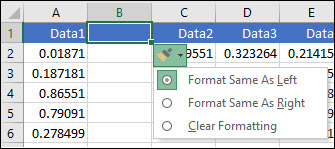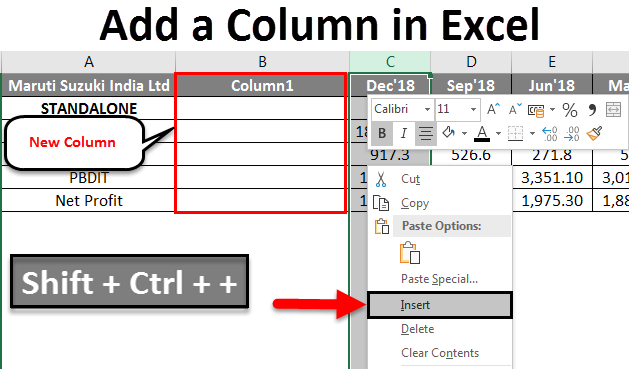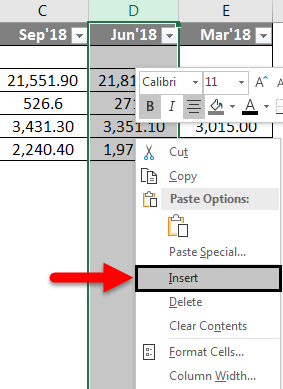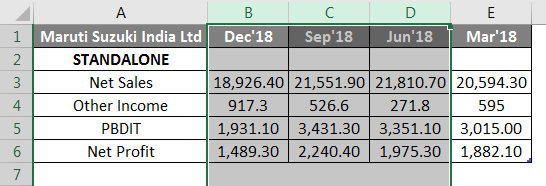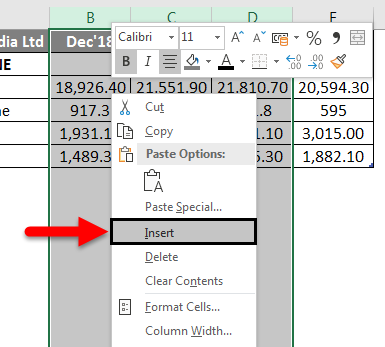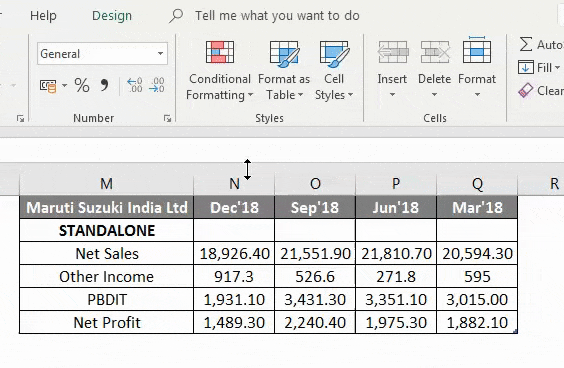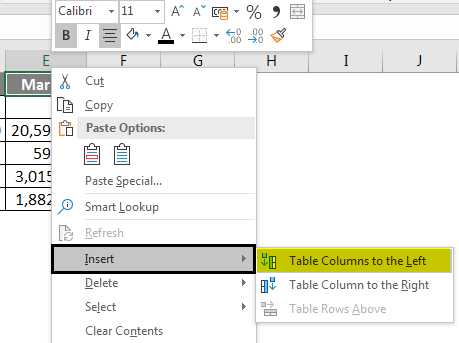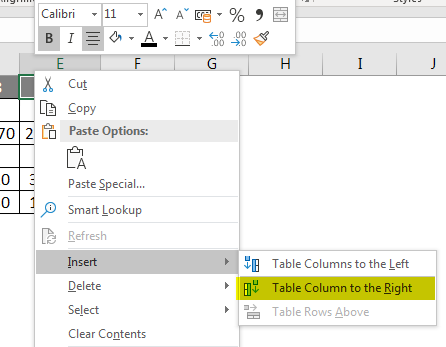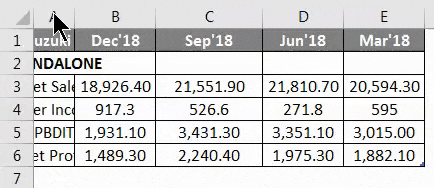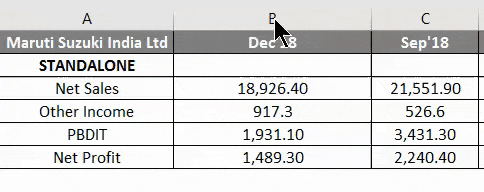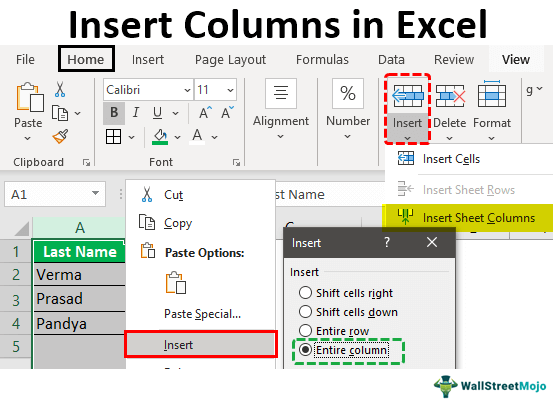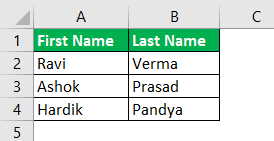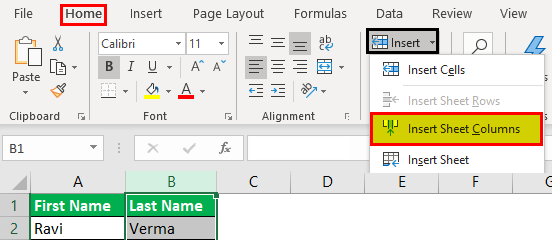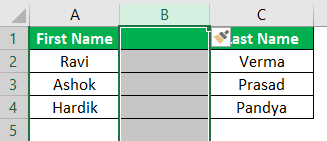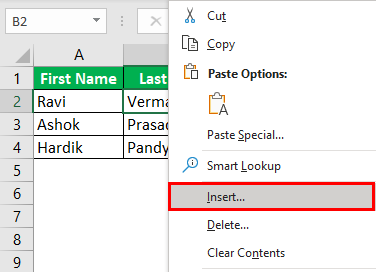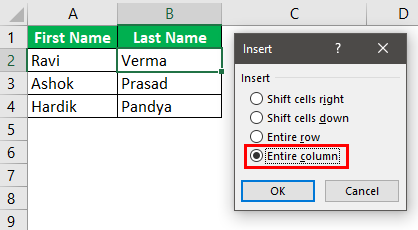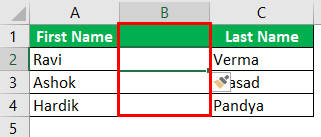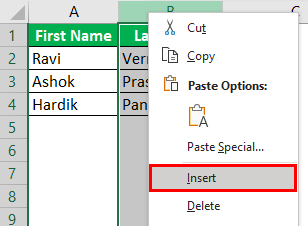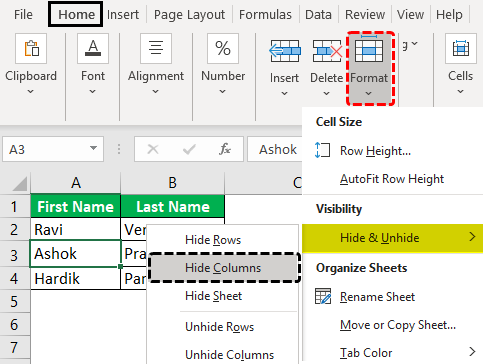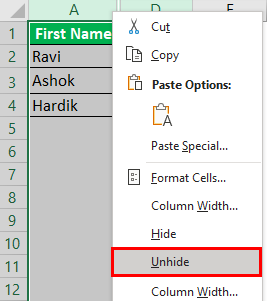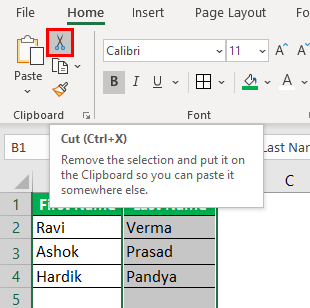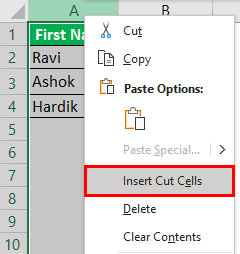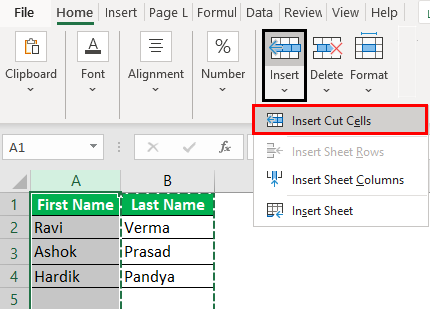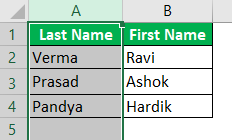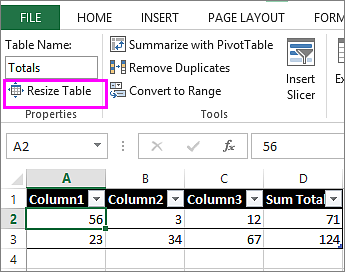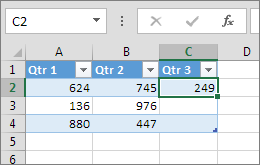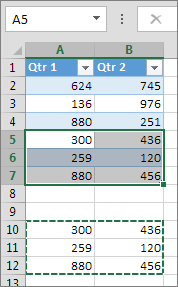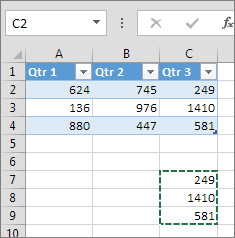Insert or delete rows and columns
Insert and delete rows and columns to organize your worksheet better.
Note: Microsoft Excel has the following column and row limits: 16,384 columns wide by 1,048,576 rows tall.
Insert or delete a column
-
Select any cell within the column, then go to Home > Insert > Insert Sheet Columns or Delete Sheet Columns.
-
Alternatively, right-click the top of the column, and then select Insert or Delete.
Insert or delete a row
-
Select any cell within the row, then go to Home > Insert > Insert Sheet Rows or Delete Sheet Rows.
-
Alternatively, right-click the row number, and then select Insert or Delete.
Formatting options
When you select a row or column that has formatting applied, that formatting will be transferred to a new row or column that you insert. If you don’t want the formatting to be applied, you can select the Insert Options button after you insert, and choose from one of the options as follows:
If the Insert Options button isn’t visible, then go to File > Options > Advanced > in the Cut, copy and paste group, check the Show Insert Options buttons option.
Insert rows
To insert a single row: Right-click the whole row above which you want to insert the new row, and then select Insert Rows.
To insert multiple rows: Select the same number of rows above which you want to add new ones. Right-click the selection, and then select Insert Rows.
Insert columns
To insert a single column: Right-click the whole column to the right of where you want to add the new column, and then select Insert Columns.
To insert multiple columns: Select the same number of columns to the right of where you want to add new ones. Right-click the selection, and then select Insert Columns.
Delete cells, rows, or columns
If you don’t need any of the existing cells, rows or columns, here’s how to delete them:
-
Select the cells, rows, or columns that you want to delete.
-
Right-click, and then select the appropriate delete option, for example, Delete Cells & Shift Up, Delete Cells & Shift Left, Delete Rows, or Delete Columns.
When you delete rows or columns, other rows or columns automatically shift up or to the left.
Tip: If you change your mind right after you deleted a cell, row, or column, just press Ctrl+Z to restore it.
Insert cells
To insert a single cell:
-
Right-click the cell above which you want to insert a new cell.
-
Select Insert, and then select Cells & Shift Down.
To insert multiple cells:
-
Select the same number of cells above which you want to add the new ones.
-
Right-click the selection, and then select Insert > Cells & Shift Down.
Need more help?
You can always ask an expert in the Excel Tech Community or get support in the Answers community.
See Also
Basic tasks in Excel
Overview of formulas in Excel
Need more help?
Want more options?
Explore subscription benefits, browse training courses, learn how to secure your device, and more.
Communities help you ask and answer questions, give feedback, and hear from experts with rich knowledge.
Excel Add Column (Table of Contents)
- Add Column in Excel
- How to Add Column in Excel?
- How to Modify a Column Width?
Add Column in Excel
Excel allows a user to add columns, whether left or right, of the column in the worksheet, which is called Add Column in Excel. Of course, there is more than one way to accomplish a task, as in all Microsoft programs. These instructions cover how rows and columns can be added and modified in an Excel worksheet using a keyboard shortcut and using the context menu with the right-click.
How to Add Column in Excel?
Adding a column in Excel is very easy and convenient whenever we want to add data to the table. There are different Methods to Insert or add Column which is as follows:
- Manually we can do this by just right-clicking on the selected column> then click on the insert button.
- Use Shift + Ctrl + + shortcut to add a new column in the Excel.
- Home tab >> click on Insert >> Select Insert Sheet Columns.
- We can add N number of columns in the Excel sheet; a user needs to select that many columns which number of columns he wants to insert.
Let’s understand How to Add Column in Excel with a few examples.
Example #1
A user has a standalone book data of sales, income, PBDIT, and Profit details of each quarter of Maruti Suzuki India Pvt Ltd in sheet1.
You can download this Add a Column Excel Template here – Add a Column Excel Template
Step 1: Select the column where a user wants to add the column in the excel worksheet (The new column will be inserted to the left of the selected column, so select accordingly)
Step 2: A user has selected the D column where he wants to insert the new column.
Step 3: Now Right-click and select Insert button or use shortcut Shift + Ctrl + +
Or
As we can see, as it was required to insert a new column between C and D column, in the above example, we have added a new column. So, as a result, it will move the D column data to the next column, which is E, and it will take the place of D.

Example #2
Let’s take the same data to analyze this example. A user wants to insert three columns left of the B column.
Step 1: Select B, C, and D columns where a user wants to insert new 3 columns in the worksheet (The new column is inserted to the left of the selected column, so select accordingly)
Step 2: A user has selected the B, C, and D columns where he wants to insert a new column
Step 3: Now Right-click and select Insert button or use shortcut Shift + Ctrl + +
Or
As we can see, as it was required to insert a new column left of the B, C, and D column, we added a new column in the above example. As a result, it will move B, C, and D column data to the next column, which are E, F, and G; it will take the place of the B, C, and D column.
Example #3
Step 1: Go to Worksheet >> Select the column’s heading where a user wants to insert a new column.
Step 2: Click on the Insert button.
Step 3: One drop-down will be open; click on the Insert Sheet Columns.
As the user wants to use the Insert toolbar to insert a new column, as in the above example, it added.
Example #4
The user can insert a new column in any version of Excel; in the above examples, we can see that we had selected one or more columns in the worksheet then >Right click on the selected column> then clicked on the Insert button.
To add a new column in the excel worksheet.
Click in a cell to the left or right of where you want to add a column. If the user wants to add a column to the left of the cell, then follow the below process:
- Click on Table Columns to the Left from the Insert option.
And if a user wants to insert the column to the right of the cell, then follow the below process:
- Click on Table Columns to the Right from the Insert option.
How to Modify a Column Width?
A user can modify the width of any column. Let’s take an example as some of the content in column A cannot be displayed. We can make all this content visible by changing the width of column A.
Step 1: Position the mouse over the column line in the column heading to the Black Cross. (As shown below)
Step 2: Click, hold and drag the mouse to increase or decrease the column width.
Step 3: Release the mouse. The column width will be changed.
A user can auto fit the width of the column. The AutoFit feature will allow you to set a column’s width to fit its content automatically.
Step1: Position the mouse over the column line in the column heading to the Black Cross.
Step2: Double-click the mouse. The column width will be changed automatically to fit the content.
Things to Remember About Add a Column in Excel
- The user needs to select that column where the user wants to insert the new column.
- By default, every row and column have the same height and width, but a user can modify the width of the column and the height of the row.
- The user can insert multiple columns at a time.
- You can also AutoFit the width for several columns at the same time. Simply select the columns you want to AutoFit, and then select the AutoFit Column Width command from the Format drop-down menu on the Home. This method can also be used for row height.
- All the rules will also be applied for rows, as applied to column insertion.
- Excel allows the user to wrap text and merging cells.
- For deleting also, we can go to Home Tab >> Delete >> Delete Sheet Columns; either we can select the column which we want to delete or >> Right Click >> click on Delete.
- After adding the insert column, all the data will be shifted to the right side after that column.
Recommended Articles
This is a guide to add a column in excel. Here we have discussed How to Add a column in excel by using different methods and How to modify a column in Excel along with practical examples and a downloadable excel template. You can also go through our other suggested articles –
- COLUMNS Formula in Excel
- Switching Columns in Excel
- Excel COLUMN to Number
- Freeze Columns in Excel
How to Add a Column in Excel: Full Guide with Shortcuts
Adding columns in our worksheets might just be one of the most basic tasks that we do in Excel.
Adding one column is not a problem. But what if you need to add multiple columns? 😱
That will not be a problem too! Learn different and faster ways to either insert a single column or insert multiple columns at once. This will surely help you insert important data faster, and work smarter in Excel😀
Let’s go!
You can download this free practice workbook we’ve prepared for you to work on.
Add columns with right-click
The easiest way to add a column in Excel is by using the right-click option. You can insert a column within two clicks of your mouse.
You can do this in two ways too! You can right-click the column letter or right-click a cell in a column. We’ll teach you how to do both👇
Right-click the Column letter
You can right-click the column letter to add a column in Excel.
The column letter is a gray-colored row containing the letters (A, B, C, … ) used to identify each column in the worksheets.

Open your practice workbook. Let’s say we want to insert a new column in the sheet intended for the titles of the names in the list.
Let’s insert a column after the Full Name column below.
- Right-click column letter B.
- Click Insert.

Viola! You’ve inserted a new column👍

We can add a title to this new column. Let’s type “Title” and fill in the needed data.

(The emails we use in these examples are generated from a fake email generator and do not belong to anyone.)
Pro Tip!
You can also highlight the whole column by selecting a cell and then press “Ctrl” + “Space” on your keyboard. Then follow the steps above to insert a column immediately.
Right-click the cell
You can also right-click the cell in a column to insert a new column.
Say, we want to add a column between columns C and D.
- Right-click on cell C4.
- Then click Insert.

An insert dialog box will pop up. Giving you options on what to insert.
- Click the Entire column option.
- Finally, click OK.

That’s it! You got a whole column you can use to insert needed data in your worksheet😊

Add columns from the ribbon menu
Another way to add columns is by using the Standard Menu option. You can insert columns by clicking the Insert button in the Home Tab of the Excel ribbon.
For example, let’s insert a new column between columns E and F in our workbook. To do that, make sure to click Column F or any of its cells👇
- Select any cell in Column F.

- Go to the Home Tab, and head over to the Cells Group.

In the Cells Group, you will find the Insert, Delete, and Format Cells options.
- Click the dropdown arrow in the Insert button.
- Select the Insert Sheet Columns option.

The column you select is the new location where your column will be inserted. This will move the other columns and their values to the right.

Add columns with shortcuts
You can do all the steps you have done above easier and faster with keyboard shortcuts. All you have to do is to press certain key combinations on your keyboard to perform tasks and functions in Excel. Here’s how.
First, select the column letter. In our workbook, select column letter E.
Then hold down the keys “Ctrl” + “Shift” + “+“.

You get an instant column😀

Insert Column Hot Key
You can also use the Insert Column Hot Key. A hot key is a key combination to perform an action quickly.
The hotkey combination for adding a column is holding down “Alt” + “I” + “C“.
To use it, simply select a cell from a column you like to insert a column before it.

“Alt” + “I” is the hotkey for “Insert”.
“Alt” + “I” + “C” is the hotkey for “Insert columns”.

Insert a column using the right-click or standard menu option. Insert a column like a PRO when you use the keyboard shortcuts, especially the Insert column hot keys😎
This works not only in inserting one column but also inserting multiple columns in Excel!
How to add multiple columns at once
You can forget having to insert a column one by one. Why do that when you can insert multiple columns at once? There are plenty of ways to choose from when you want to insert multiple columns.
We can use the right-click option to insert multiple columns.
Let’s add three new columns to our worksheet. A column for First Name, Middle Initial, and Last Name.
- Highlight Column letters C, D, E.

- Right-click and select Insert.

Three new columns are added in seconds⚡

You can choose to do this using the Standard Menu option as well. Any of the ways will yield the same results.
The number of columns you highlight will be the number of columns that will be inserted into the worksheet.
Insert Column Hot Key
Let’s try to insert multiple new columns using keyboard shortcuts. Specifically, the Insert Column Hotkey.
- Select cells C3 to E5.
- Press Alt + I + C on your keyboard.

Columns are inserted instantly🙌

You can add single or multiple columns using the Keyboard shortcut. Whichever works for you. But this one is our favorite😊
That’s it – Now what?
Nice work! Adding columns might be basic and repetitive when working in Excel but you can always level up by adding multiple columns using shortcuts😀
You can now add a column or columns as needed in your worksheets to insert important data that shouldn’t be missing in your report or records.
While adding rows is easy, Excel has a lot in store for you to make your work easier. Learn about Excel’s built-in functions like the IF and SUMIF function. Don’t miss out on Excel’s most popular function too: the VLOOKUP function🚀
You won’t be missing these when you join my free 30-minute video course.
Other resources
Do you want to know how to insert rows instead? We got you! Click here to learn how to insert rows in Excel.
You can actually transpose data between rows and columns in excel. Read our How to Transpose Data in Excel: Turn Rows into Columns (2022) guide to help you transpose data between rows and columns!
Happy reading (and learning)👋
Kasper Langmann2022-12-14T00:54:10+00:00
Page load link
Adding a column in Excel means inserting a new column to the existing dataset. Besides inserting, one may need to delete, hide, unhide, and move rows or columns. Such modifications help in structuring and organizing the dataset. As a result, it is essential to be aware of the techniques related to these alterations.
For example, while preparing a consolidated balance sheet, Mr. X realizes that the data related to the previous year is missing. To include this data, he wants to insert a new column. Here, the method of inserting a column comes into use.
Excel provides different ways of performing actions on a dataset. This article discusses the most appropriate and effective methods of working with data. It covers the following aspects: –
- Insert Excel columns (alternate methods and shortcuts)
- Delete columns and rows
- Hide and unhide rows or columns
- Move rows or columns
Apart from inserting columns in Excel, the remaining topics have been covered in brief.
Table of contents
- How to Add/Insert Columns in Excel?
- Example #1–Add Columns in Excel
- Example #2–Alternate Method to Insert Rows and Columns in Excel
- Example #3–Hide and Unhide Columns & Rows in Excel
- Example #4–Move Rows or Columns in Excel
- Shortcuts to Insert Columns in Excel
- Frequently Asked Questions
- Recommended Articles
How to Add/Insert Columns in Excel?
Below are some examples through which you may learn how to add and insert columns in Excel.
Example #1–Add Columns in Excel
The following table shows the first and the last names in columns A and B, respectively. We want to insert a new column (column B) between these names, which will display the middle name.
The steps to insert a new column (column B) between two existing columns (columns A and B) are listed as follows:
Step 1: Select any cell of column B. Alternatively, one can also select column B, as shown in the following image. Further, click the “Insert” drop-down from the “Home” tab of the Excel ribbonThe ribbon is an element of the UI (User Interface) which is seen as a strip that consists of buttons or tabs; it is available at the top of the excel sheet. This option was first introduced in the Microsoft Excel 2007.read more. Finally, select “Insert Sheet Columns.”
Note: To select a column, click its label or header on top.
Step 2: A new column (column B) is inserted between the columns containing the first and the last names. As a result, the data (last name) of the previous column B (shown in step 1) now shifts to column C.
Note: Excel inserts a column immediately preceding the column of the selected cell. Hence, one must always choose a cell accordingly. If a column is selected, Excel inserts a column preceding it.
Example #2–Alternate Method to Insert Rows and Columns in Excel
Working on the data of example #1, we need to insert a middle name column using the following methods:
a) Select and right-click a cell
b) Select and right-click a column
a) The steps for inserting a column after selecting and right-clicking a cell are listed as follows:
Step 1: Select any cell of column B. This is because a column preceding column B is to be inserted. Right-click the selection and choose “insert,” as shown in the following image.
Step 2: The “Insert” dialog box appears. Select “Entire column” to insert a new column.
Note: For inserting a new row, select “Entire row.”
Step 3: A new column (column B) for typing middle names has been inserted.
b) The steps for inserting a column after selecting and right-clicking a column are listed as follows:
Step 1: Select the entire column B. That is because a column preceding column B is to be inserted. Right-click the selection and choose “Insert,” as shown in the following image.
Step 2: A new column B is inserted. The same has been shown under step 3 of method a.
Note: Select the entire row preceding which a new row is inserted for inserting rows. Right-click the selection and choose “Insert.” The same is shown in the following image.
Example #3–Hide and Unhide Columns & Rows in Excel
Working on the data of example #1, we want to perform the following tasks:
a) Hide columns A and B or rows 3 and 4 by right-clicking
b) Hide column A by using the “format” drop-down
c) Unhide columns B and C by right-clicking
a) The steps to hide the columns A and B or rows 3 and 4 by right-clicking are listed as follows:
Step 1: Select columns A and B. Right-click the selection and choose “hide,” as shown in the next image.
Note 1: To select a row or column, click the row number (to the left) or the column label (on top).
Note 2: Multiple adjacent rows or columns can be selected by dragging across the row and column headings. Alternatively, hold the “Shift” key while selecting the rows or columns.
Note 3: We can select non-adjacent rows or columns by holding the “Ctrl” key while making the selections.
Step 2: Columns A and B will be hidden. Likewise, select rows 3 and 4. Right-click the selection and choose the “Hide” option from the context menu. The same is shown in the following image.
It will hide rows 3 and 4.
b) The steps to hide column A by using the “format” drop-down are listed as follows:
Step 1: Select any cell of column A. Click the “Format” drop-down under the “Home” tab of the Excel ribbon. Next, select “Hide Columns” under the “Hide & Unhide” option.
The same is shown in the following image.
Note: Alternatively, select the relevant column to be hidden. Click “Hide columns” under the “Hide & Unhide” option.
Step 2: We will hide the column of the selected cell, column A. Likewise, to hide rows, select the relevant row. Then, choose “Hide Rows” from the “Hide & Unhide” option of the “Format” drop-down.
c) The steps to unhide columns B and C by right-clicking are listed as follows:
Step 1: Select the unhidden columns (A and D) immediately before and after the hidden columns (B and C). Right-click the selection and choose “Unhide.”
Step 2: The columns B and C will be unhidden. The dataset appears as shown in step 1 of task b.
Likewise, unhide rows by selecting the “Unhide rows” (immediately before and after the hidden rows) and clicking “Unhide” from the context menu.
Example #4–Move Rows or Columns in Excel
Working on the data of example #1, we want to move column B (last name) to precede column A (first name).
The steps to move column B are listed as follows:
Step 1: Select column B, which is to be moved. Cut it in either of the following ways:
- Press “Ctrl+X.”
- Click the scissors icon from the “Clipboard” group of the “Home” tab.
Step 2: Select column A, where the data of column B is to be pasted. Right-click the selection and choose “Insert Cut Cells.”
Alternatively, select “Insert Cut Cells” from the “Insert” drop-down of the “Home” tab. The same is shown in the following image.
Note: The “Insert Cut Cells” option will be visible once the selected cells have been cut.
Step 3: The data of column B is pasted into column A. Hence, the first column (column A) now contains the last names. The data of the initial column A (first name) automatically shifts to column B.
The same is shown in the following image.
Note: A row can be selected, cut, and pasted to the desired location. Select the “Insert Cut Cells” option from the “Insert” drop-down of the “Home” tab for pasting.
Shortcuts to Insert Columns in Excel
Let us go through the two shortcuts for inserting columns and rows.
a) Shortcut for inserting with the “Insert” drop-down of the “Home” tab
The excel shortcutAn Excel shortcut is a technique of performing a manual task in a quicker way.read more for inserting a row or column with the “Insert” drop-down works as follows:
- Select a cell preceding which a row or column is inserted.
- Click the “Insert” drop-down from the “Cells” group of the “Home” tab.
- Press “R” to insert a row or “C” to insert a column
A new row or column is inserted depending on the third pointer’s key.
Note: Under the “Insert” drop-down, the “R” of “insert sheet rows” and the “C” of “insert sheet columns” are underlined. Hence, these keys work as shortcuts for inserting rows and columns.
b) Shortcut for inserting with right-click
- The shortcut for inserting a row or column with right-click works as follows:
- Select a cell preceding which a row or column is inserted.
- Right-click the selection and press “I.” The “Insert” dialog box opens.
- Press “R” to insert a row or “C” to insert a column.
- Press the “Enter” key.
A new row or column is inserted depending on the third pointer’s key.
Note: If the “Insert” dialog box does not open in step 2, press the “Enter” key after pressing “I.” It opens the “Insert” dialog box.
Frequently Asked Questions
1. What does it mean to insert a column? How is it done in Excel?
Inserting a column refers to adding a new column to an existing dataset. This new column may contain additional data that can be important for the end-user.
Additionally, there is a possibility that a column has been omitted by mistake. In such cases, inserting a column will be helpful.
The steps to insert a column in Excel are listed as follows:
a. Select the column preceding which a new column is to be inserted.
b. Right-click the selection and choose “Insert” from the context menu.
It will insert the new column immediately before the selected column.
Note: To select a column, click its header (label) on top.
2. How to insert a column in Excel by using a shortcut?
Let us insert a new column E in Excel. The steps to insert a column (column E) by using a shortcut are listed as follows:
a. Select the existing column E.
b. Press the keys “Ctrl+Shift+plus sign(+)” together to insert a column.
It will insert the new column E. The data of the initial column E now shifts to column F.
Note 1: One must select a column carefully. That is because Excel inserts a column preceding the selected column.
Note 2: As an alternative to step a, one can select any cell of column E. After that, press “Ctrl+space” to select the entire column E.
3. How to insert multiple adjacent columns in Excel?
Let us insert columns D, E, and F in Excel. The steps to insert multiple columns (D, E, and F) are listed as follows:
a. Select as many columns in the existing dataset as the number of the new columns to be inserted. So, select the current columns D, E, and F.
b. Press the keys “Ctrl+Shift+plus sign(+)” together.
It will insert the blank columns D, E, and F. The initial columns D, E, and F data shift to columns G, H, and I.
Note 1: Alternative to step a: select adjacent cells of columns D, E, and F. These cells should be in one row. Further, press “Ctrl+space.” As a result, columns D, E, and F will be selected.
Note 2: To select multiple adjacent columns (in step a), drag across the column headings. Alternatively, hold the “Shift” key while selecting the columns.
Note 3: Alternative to step b: right-click the selection and choose “Insert.”
Recommended Articles
This article is a guide to Add Columns in Excel. We also discuss inserting, hiding, and moving rows and columns in Excel and practical examples. You may learn more about Excel from the following articles: –
- Compare Two Columns in Excel for Matches
- 3 Ways to Show Excel Negative Numbers
- Rows vs. Columns
- Move Columns in Excel
Home / Excel Basics / How to Add a Column in Excel
While working in Excel, adding, or removing the column(s) is a common task, and there are multiple ways to add or insert the columns in the Excel sheets.
One can choose any of the ways to add or insert the columns based on his/her preference.
Steps to Insert a Single Column
- First, right-click on any cell in the column.
- After that, you will get a pop-up with multiple options.
- Now, click on the “Insert” option.
- After that, right-click and you will get a pop-up with multiple options.
- Now, select the “Entire column” option and click ok.
- At this point, the column has been inserted to the left of your selected cell.
Tip: you can select the whole single or multiple columns by selecting the column header letters and right-click, then select “Insert” from the pop-up option. The number of inserted columns always depends on how many columns you have selected.
You can also insert the column from the “Home” Tab Ribbon.
- First, make sure that you are on the “Home Tab” and then click on any cell in the column.
- Here, you will find the “Insert” icon within the “cells” group on the Ribbon.
- Now, click on the “Insert” icon and select “Insert Sheet Column” from the listed drop-down menu.
- At this point, the column has been inserted to the left of your selected column cell.
Add Multiple Columns
- To add multiple columns, first, you need to select multiple cells instead of a single cell.
- After that, right-click and you will get a pop-up with multiple options.
- Now, click on the “Insert” option.
- Once you click on the “Insert” option, you will again get a pop-up option.
- Now, select the “Entire column” option and click ok.
- At this point, three columns have been inserted to the left of your selected cells as you had selected three cells.
- To add the multiple “non-adjacent” columns, First, you need to select the cells one by one by holding the CTRL key from the keyboard.
- Once you select the cells, release the CTRL key
- After that, right-click and click on the “Insert” option from the pop-up options.
- Now, select the “Entire column” option and click ok.
- At this point, “non-adjacent” columns have been inserted to the left of your selected cells.
Insert a Column in Excel Table
When you convert your data set into a table range, the insert column method losses some of its functionality.
For example, you cannot insert non-adjacent columns in one go as you do in a normal data set by selecting the non-adjacent columns to insert columns to the left of them.
In table range, if you want to insert multiple non-adjacent columns, you need to do it one by one.
Add a Column using a Keyword Shortcut
My favorite shortcut method to insert the column(s) is by selecting the whole column with a shortcut key to the left of which you want to insert the column.
Tip: You can press + (Plus Sign) multiple times to insert multiple columns while holding the SHIFT + Control.
Содержание
- Create and format tables
- Try it!
- Insert or delete rows, and columns
- Insert or delete a column
- Insert or delete a row
- Formatting options
- Insert rows
- Insert columns
- Delete cells, rows, or columns
- Insert cells
- Need more help?
- Resize a table by adding or removing rows and columns
- Need more help?
- Excel Add a Column
- Add Column in Excel
- How to Add Column in Excel?
- Example #1
- Example #2
- Example #3
- Example #4
- How to Modify a Column Width?
- Things to Remember About Add a Column in Excel
- Recommended Articles
Create and format tables
Create and format a table to visually group and analyze data.
Note: Excel tables shouldn’t be confused with the data tables that are part of a suite of What-If Analysis commands ( Forecast, on the Data tab). See Introduction to What-If Analysis for more information.
Try it!
Select a cell within your data.
Select Home > Format as Table.
Choose a style for your table.
In the Create Table dialog box, set your cell range.
Mark if your table has headers.
Insert a table in your spreadsheet. See Overview of Excel tables for more information.
Select a cell within your data.
Select Home > Format as Table.
Choose a style for your table.
In the Create Table dialog box, set your cell range.
Mark if your table has headers.
To add a blank table, select the cells you want included in the table and click Insert > Table.
To format existing data as a table by using the default table style, do this:
Select the cells containing the data.
Click Home > Table > Format as Table.
If you don’t check the My table has headers box, Excel for the web adds headers with default names like Column1 and Column2 above the data. To rename a default header, double-click it and type a new name.
Note: You can’t change the default table formatting in Excel for the web.
Источник
Insert or delete rows, and columns
Insert and delete rows and columns to organize your worksheet better.
Note: Microsoft Excel has the following column and row limits: 16,384 columns wide by 1,048,576 rows tall.
Insert or delete a column
Select any cell within the column, then go to Home > Insert > Insert Sheet Columns or Delete Sheet Columns.
Alternatively, right-click the top of the column, and then select Insert or Delete.
Insert or delete a row
Select any cell within the row, then go to Home > Insert > Insert Sheet Rows or Delete Sheet Rows.
Alternatively, right-click the row number, and then select Insert or Delete.
Formatting options
When you select a row or column that has formatting applied, that formatting will be transferred to a new row or column that you insert. If you don’t want the formatting to be applied, you can select the Insert Options button after you insert, and choose from one of the options as follows:
If the Insert Options button isn’t visible, then go to File > Options > Advanced > in the Cut, copy and paste group, check the Show Insert Options buttons option.
Insert rows
To insert a single row: Right-click the whole row above which you want to insert the new row, and then select Insert Rows.
To insert multiple rows: Select the same number of rows above which you want to add new ones. Right-click the selection, and then select Insert Rows.
Insert columns
To insert a single column: Right-click the whole column to the right of where you want to add the new column, and then select Insert Columns.
To insert multiple columns: Select the same number of columns to the right of where you want to add new ones. Right-click the selection, and then select Insert Columns.
Delete cells, rows, or columns
If you don’t need any of the existing cells, rows or columns, here’s how to delete them:
Select the cells, rows, or columns that you want to delete.
Right-click, and then select the appropriate delete option, for example, Delete Cells & Shift Up, Delete Cells & Shift Left, Delete Rows, or Delete Columns.
When you delete rows or columns, other rows or columns automatically shift up or to the left.
Tip: If you change your mind right after you deleted a cell, row, or column, just press Ctrl+ Z to restore it.
Insert cells
To insert a single cell:
Right-click the cell above which you want to insert a new cell.
Select Insert, and then select Cells & Shift Down.
To insert multiple cells:
Select the same number of cells above which you want to add the new ones.
Right-click the selection, and then select Insert > Cells & Shift Down.
Need more help?
You can always ask an expert in the Excel Tech Community or get support in the Answers community.
Источник
Resize a table by adding or removing rows and columns
After you create an Excel table in your worksheet, you can easily add or remove table rows and columns.
You can use the Resize command in Excel to add rows and columns to a table:
Click anywhere in the table, and the Table Tools option appears.
Click Design > Resize Table.
Select the entire range of cells you want your table to include, starting with the upper-leftmost cell.
In the example shown below, the original table covers the range A1:C5. After resizing to add two columns and three rows, the table will cover the range A1:E8.
Tip: You can also click Collapse Dialog 

When you’ve selected the range you want for your table, press OK.
Add a row or column to a table by typing in a cell just below the last row or to the right of the last column, by pasting data into a cell, or by inserting rows or columns between existing rows or columns.
To add a row at the bottom of the table, start typing in a cell below the last table row. The table expands to include the new row. To add a column to the right of the table, start typing in a cell next to the last table column.
In the example shown below for a row, typing a value in cell A4 expands the table to include that cell in the table along with the adjacent cell in column B.
In the example shown below for a column, typing a value in cell C2 expands the table to include column C, naming the table column Qtr 3 because Excel sensed a naming pattern from Qtr 1 and Qtr 2.
To add a row by pasting, paste your data in the leftmost cell below the last table row. To add a column by pasting, paste your data to the right of the table’s rightmost column.
If the data you paste in a new row has as many or fewer columns than the table, the table expands to include all the cells in the range you pasted. If the data you paste has more columns than the table, the extra columns don’t become part of the table—you need to use the Resize command to expand the table to include them.
In the example shown below for rows, pasting the values from A10:B12 in the first row below the table (row 5) expands the table to include the pasted data.
In the example shown below for columns, pasting the values from C7:C9 in the first column to right of the table (column C) expands the table to include the pasted data, adding a heading, Qtr 3.
Use Insert to add a row
To insert a row, pick a cell or row that’s not the header row, and right-click. To insert a column, pick any cell in the table and right-click.
Point to Insert, and pick Table Rows Above to insert a new row, or Table Columns to the Left to insert a new column.
If you’re in the last row, you can pick Table Rows Above or Table Rows Below.
In the example shown below for rows, a row will be inserted above row 3.
For columns, if you have a cell selected in the table’s rightmost column, you can choose between inserting Table Columns to the Left or Table Columns to the Right.
In the example shown below for columns, a column will be inserted to the left of column 1.
Select one or more table rows or table columns that you want to delete.
You can also just select one or more cells in the table rows or table columns that you want to delete.
On the Home tab, in the Cells group, click the arrow next to Delete, and then click Delete Table Rows or Delete Table Columns.
You can also right-click one or more rows or columns, point to Delete on the shortcut menu, and then click Table Columns or Table Rows. Or you can right-click one or more cells in a table row or table column, point to Delete, and then click Table Rows or Table Columns.
Just as you can remove duplicates from any selected data in Excel, you can easily remove duplicates from a table.
Click anywhere in the table.
This displays the Table Tools, adding the Design tab.
On the Design tab, in the Tools group, click Remove Duplicates.
In the Remove Duplicates dialog box, under Columns, select the columns that contain duplicates that you want to remove.
You can also click Unselect All and then select the columns that you want or click Select All to select all of the columns.
Note: Duplicates that you remove are deleted from the worksheet. If you inadvertently delete data that you meant to keep, you can use Ctrl+Z or click Undo 
Make sure that the active cell is in a table column.
Click the arrow 
To filter for blanks, in the AutoFilter menu at the top of the list of values, clear (Select All), and then at the bottom of the list of values, select (Blanks).
Note: The (Blanks) check box is available only if the range of cells or table column contains at least one blank cell.
Select the blank rows in the table, and then press CTRL+- (hyphen).
You can use a similar procedure for filtering and removing blank worksheet rows. For more information about how to filter for blank rows in a worksheet, see Filter data in a range or table.
Select the table, then select Table Design > Resize Table.
Adjust the range of cells the table contains as needed, then select OK.
Important: Table headers can’t move to a different row, and the new range must overlap the original range.
Need more help?
You can always ask an expert in the Excel Tech Community or get support in the Answers community.
Источник
Excel Add a Column
Excel Add Column (Table of Contents)
Add Column in Excel
Excel allows a user to add columns, whether left or right, of the column in the worksheet, which is called Add Column in Excel. Of course, there is more than one way to accomplish a task, as in all Microsoft programs. These instructions cover how rows and columns can be added and modified in an Excel worksheet using a keyboard shortcut and using the context menu with the right-click.
Excel functions, formula, charts, formatting creating excel dashboard & others
How to Add Column in Excel?
Adding a column in Excel is very easy and convenient whenever we want to add data to the table. There are different Methods to Insert or add Column which is as follows:
- Manually we can do this by just right-clicking on the selected column> then click on the insert button.
- Use Shift + Ctrl + + shortcut to add a new column in the Excel.
- Home tab >> click on Insert >> Select Insert Sheet Columns.
- We can add N number of columns in the Excel sheet; a user needs to select that many columns which number of columns he wants to insert.
Let’s understand How to Add Column in Excel with a few examples.
Example #1
A user has a standalone book data of sales, income, PBDIT, and Profit details of each quarter of Maruti Suzuki India Pvt Ltd in sheet1.
Step 1: Select the column where a user wants to add the column in the excel worksheet (The new column will be inserted to the left of the selected column, so select accordingly)
Step 2: A user has selected the D column where he wants to insert the new column.
Step 3: Now Right-click and select Insert button or use shortcut Shift + Ctrl + +
As we can see, as it was required to insert a new column between C and D column, in the above example, we have added a new column. So, as a result, it will move the D column data to the next column, which is E, and it will take the place of D.

Example #2
Let’s take the same data to analyze this example. A user wants to insert three columns left of the B column.
Step 1: Select B, C, and D columns where a user wants to insert new 3 columns in the worksheet (The new column is inserted to the left of the selected column, so select accordingly)
Step 2: A user has selected the B, C, and D columns where he wants to insert a new column
Step 3: Now Right-click and select Insert button or use shortcut Shift + Ctrl + +
As we can see, as it was required to insert a new column left of the B, C, and D column, we added a new column in the above example. As a result, it will move B, C, and D column data to the next column, which are E, F, and G; it will take the place of the B, C, and D column.
Example #3
Step 1: Go to Worksheet >> Select the column’s heading where a user wants to insert a new column.
Step 2: Click on the Insert button.
Step 3: One drop-down will be open; click on the Insert Sheet Columns.
As the user wants to use the Insert toolbar to insert a new column, as in the above example, it added.
Example #4
The user can insert a new column in any version of Excel; in the above examples, we can see that we had selected one or more columns in the worksheet then >Right click on the selected column> then clicked on the Insert button.
To add a new column in the excel worksheet.
Click in a cell to the left or right of where you want to add a column. If the user wants to add a column to the left of the cell, then follow the below process:
- Click on Table Columns to the Left from the Insert option.
And if a user wants to insert the column to the right of the cell, then follow the below process:
- Click on Table Columns to the Right from the Insert option.
How to Modify a Column Width?
A user can modify the width of any column. Let’s take an example as some of the content in column A cannot be displayed. We can make all this content visible by changing the width of column A.
Step 1: Position the mouse over the column line in the column heading to the Black Cross. (As shown below)
Step 2: Click, hold and drag the mouse to increase or decrease the column width.
Step 3: Release the mouse. The column width will be changed.
A user can auto fit the width of the column. The AutoFit feature will allow you to set a column’s width to fit its content automatically.
Step1: Position the mouse over the column line in the column heading to the Black Cross.
Step2: Double-click the mouse. The column width will be changed automatically to fit the content.
Things to Remember About Add a Column in Excel
- The user needs to select that column where the user wants to insert the new column.
- By default, every row and column have the same height and width, but a user can modify the width of the column and the height of the row.
- The user can insert multiple columns at a time.
- You can also AutoFit the width for several columns at the same time. Simply select the columns you want to AutoFit, and then select the AutoFit Column Width command from the Format drop-down menu on the Home. This method can also be used for row height.
- All the rules will also be applied for rows, as applied to column insertion.
- Excel allows the user to wrap text and merging cells.
- For deleting also, we can go to Home Tab >> Delete >> Delete Sheet Columns; either we can select the column which we want to delete or >> Right Click >> click on Delete.
- After adding the insert column, all the data will be shifted to the right side after that column.
Recommended Articles
This is a guide to add a column in excel. Here we have discussed How to Add a column in excel by using different methods and How to modify a column in Excel along with practical examples and a downloadable excel template. You can also go through our other suggested articles –
Источник
Download Article
Add values for an entire column or range
Download Article
- Using AutoSum for One Column
- Using SUM for One Column
- Using SUM for Multiple Columns
- Using SUMIF
- Using the Status Bar
- Using a Table
- Q&A
- Tips
- Warnings
|
|
|
|
|
|
|
|
This wikiHow will show you how to sum columns in Microsoft Excel for Windows or Mac. Use the AutoSum feature to quickly and easily find the total sum of a column’s values. You can also make your own formula using the SUM function! We’ll cover how to add the values of individual columns and entire cell ranges.
Things You Should Know
- Go to Formulas > AutoSum to automatically add up a column.
- Use the SUM function to add individual or multiple columns.
- To add multiple columns, select the cell range containing each column you want to sum.
-
1
Click the cell directly below the values you want to sum. For example, if you have values in cells A1 through A5, you would click A6.[1]
- If you’re just getting started with Excel, check out our intro guides for making a spreadsheet and formatting a spreadsheet.
-
2
Click the Formulas tab. This will display various formula options in the top bar.
Advertisement
-
3
Click AutoSum. This will open a drop down menu with AutoSum options.
-
4
Click Sum. This will automatically create a SUM function that adds the values of the column. You’ll see the values that are going to be summed in a highlighted selection box.
-
5
Press ↵ Enter or ⏎ Return on your keyboard. This will confirm the SUM formula and show you the sum total in the cell you selected.
Advertisement
-
1
Click a cell below the column you want to add up. Doing so will place your cursor in the cell. This method uses the SUM function, which adds all of the values in a given cell range.
- If you’re looking for subtraction information, check out our guide to subtracting in Excel.
-
2
Enter the «SUM» function. Type =SUM() into the cell.
-
3
Enter the column’s range. Type the top cell in the column, a colon, and the bottom cell in the column into the parentheses.
- For example, if you’re adding values in the A column and you have data in cells A2 through A10, you would type in the following: =SUM(A2:A10)
- If your dataset has a header row, don’t include the header in the SUM formula.
-
4
Press ↵ Enter or ⏎ Return. This will display the sum of the column in your selected cell.
-
5
Create the sums of the other columns you want to add. You can create SUM formulas for each column, or copy the first formula:
- To quickly sum other columns of the same length, you can press Ctrl+c (Windows) to copy the cell with the SUM formula, then press Ctrl+v (Windows) to paste it under the other columns.
- On Mac, these shortcuts are ⌘ Cmd+c and ⌘ Cmd+v respectively.
- Pasting the formula will automatically change the cell references to the column that corresponds with where you pasted the formula.
- To quickly sum other columns of the same length, you can press Ctrl+c (Windows) to copy the cell with the SUM formula, then press Ctrl+v (Windows) to paste it under the other columns.
Advertisement
-
1
Determine which of your columns is the longest. This method adds up multiple columns in one formula. In order to include all of the cells in the longest column, you’ll need to know to which row the column extends.
- For example, if you have three columns and the longest one has values from row 1 through row 20, your formula will need to include rows 1 through 20 for each column you want to add even if this includes blank cells.
-
2
Determine your beginning and ending columns. If you’re adding the A column and the B column, for example, your beginning column is the A column and your ending column is the B column.
-
3
Select a blank cell. Click the cell in which you want to display the sum of your columns.
-
4
Enter the «SUM» command. Type =SUM() into the cell.
-
5
Enter the cell range. For a range of cells, the left cell in the range is the top-left cell, and the right cell is the bottom-right cell. These two cells define the range.
- In other words, type the first column letter, the first row number, a colon, the last column letter, and the last row number.
- For example, if you’re adding columns A, B, and C, and your longest column stretches to row 20, you would enter the following: =SUM(A1:C20)
-
6
Press ↵ Enter or ⏎ Return. Doing so will display the sum of all of the columns in your selected cell.
Advertisement
-
1
Click a cell below the column you want to add up. Doing so will place your cursor in the cell. This method uses the SUMIF function, which allows you to add values in a data range if they meet a certain criteria.[2]
-
2
Enter the «SUMIF» function. Type =SUMIF() into the cell.
- SUMIF has three arguments: range, criteria, [sum_range]. The [sum_range] argument is optional and used to specify a different range to sum values in. The criteria argument will check the range specified in the first argument.
-
3
Enter the column’s range and a comma. Type the top cell in the column, a colon, and the bottom cell in the column into the parentheses.
- For example, if you’re checking the values in the A column and you have data in cells A2 through A10, you would type in the following: =SUMIF(A2:A10,)
- If your dataset has a header row, don’t include the header in the SUM formula.
-
4
Enter the criteria you want to check. Place the criteria as the second argument after the comma. This can be a cell reference, text, number, expression, or function. Each cell in the specified range will be checked using this criteria. If the criteria is met, it will be added to the total sum. Here are a few examples:
- =SUMIF(A2:A10, 7) would check whether a value equals 7.
- =SUMIF(A2:A10, "<10") would check whether a value is less than 10. Note that logical criteria needs quotation marks.
- =SUMIF(A2:A10, "cat") would check whether the value is the word «cat».
-
5
Enter a comma and a sum range (optional). Place a comma after the criteria argument, then type a sum range. The sum range needs to be the same shape and size as the range in the first argument. SUMIF will check the criteria in the range and add the corresponding value in the sum range.
- For example, if you had 9 purchases in A2:A10 and their corresponding prices in B2:B10, you could sum the prices of purchase called «food» using this formula:
- =SUMIF(A2:A10, "food", B2:B10)
-
6
Press ↵ Enter or ⏎ Return. This will display the sum in your selected cell.
Advertisement
-
1
Click a column letter to see the sum of its values. This is the letter header located above the spreadsheet cells. The entire column will be highlighted.
-
2
Look at the status bar to see the sum. At the bottom of Excel is the status bar. The sum total of the values in the column will be displayed next to «sum:».
Advertisement
-
1
Select your dataset. Click and drag from the top left to the bottom right of your dataset to select it. This method changes the dataset into a table, to which you can add a total row.[3]
-
2
Click the Home tab. It’s at the top of the Excel window.
-
3
Click Format as Table. A drop down menu will appear with table options.
-
4
Select a table style. You can select from a variety of colors and formats. A small window titled «Create table» will appear after selecting a style.
-
5
Check the box next to «My table has headers» (if needed). If your dataset has a header row, select this option to format the table correctly. Otherwise, uncheck the box.
-
6
Click OK. This will change the dataset into a table.
-
7
Click the Table Design tab. It’s at the top of the Excel window.
-
8
Check the box next to «Total Row». This is an option in the «Table Style Options» section of the Table Design tab.[4]
-
9
Click the cell in the total row in the column you want to sum. A drop down arrow will appear next to the cell. For example, if your data is in A2:A10 and the total row is in row 11, you would click A11.
-
10
Click the drop down arrow ▼. This will display a down down menu with total options.
-
11
Select Sum. This is an option in the total drop down menu. A sum total for that column will appear in the cell. You’re done!
Advertisement
Add New Question
-
Question
How do I copy a formula?
Right click on the cell with the formula, select «Copy,» and then paste the formula into the desired cell. Keep in mind you may have to manipulate the formula in the new cell if the columns are not the same length.
-
Question
How do I multiply two cells?
To multiply two cells use the * key to multiply by pressing shift 8, and type it in the cell you want, e.g. A1*B5.
Ask a Question
200 characters left
Include your email address to get a message when this question is answered.
Submit
Advertisement
-
To total up a single column, you can enter the column’s first value, a colon, and the last value into the SUM command. For example, to add cells A1, A2, A3, A4, and A5 together, you would type =SUM(A1:A5) into an empty cell.
-
For an advanced Excel function, check out our guide on using VLOOKUP.
Thanks for submitting a tip for review!
Advertisement
-
Changing a column cell’s contents will cause the cell in which you’re displaying the columns’ total to change its value as well.
Advertisement
About This Article
Thanks to all authors for creating a page that has been read 157,984 times.
Is this article up to date?
Sometimes we need to add an extra column to a spreadsheet during final touches or are told to do so. Whether you want to create new categories, separate data into several columns, or organize the spreadsheet to make it easier to navigate, Excel allows you to add columns in multiple ways.
From pressing a few clicks to using a keyboard shortcut, we’ll cover the best ways to add columns in Microsoft Excel sheets in this article.
1. How to Add a Column Using a Keyboard Shortcut
As with any other feature in Excel, you can add single or multiple columns with keyboard shortcuts. Therefore, let’s add a new column in Excel using the fastest method possible.
To add a column in Excel on a Windows computer, press CTRL + Shift + «+», whereas Mac users can press «^» + I to do so. However, before pressing the shortcut, you must select the column that you want to move forward by adding a new column to its place.
Excel always adds a column left to the selection, so keep that in mind. Below, we selected column B, then pressed the shortcut, and the data in column B moved to the next column.
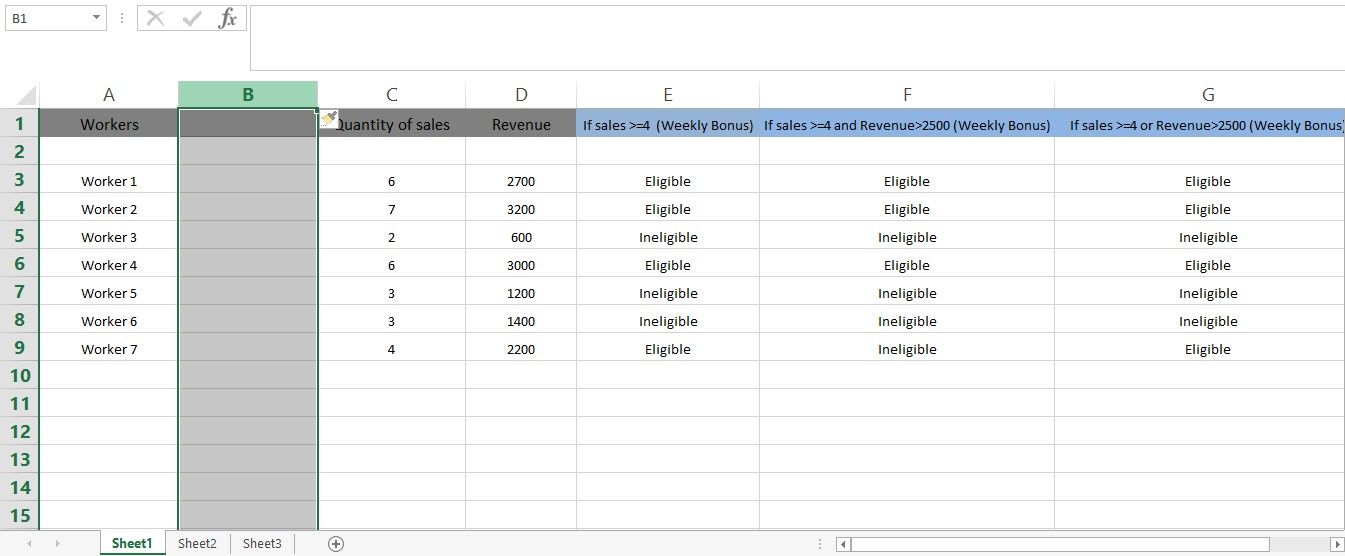
How to Add Multiple Columns in Excel Using a Keyboard Shortcut
To add multiple columns in Excel requires you to select the same number of columns you wish to move ahead at the same time before pressing the shortcut.
For example, if you wish to add three columns between columns A and B, you need to select columns B, C, and D in one go before pressing the shortcut.
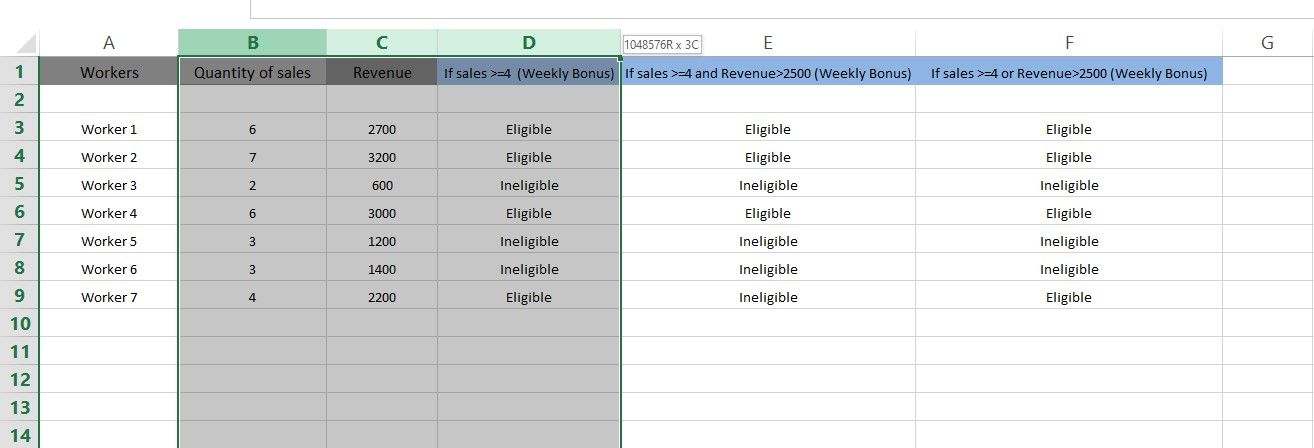
The final output will be as follows:

If you select three columns separately, pressing the shortcut will add a column to the left of each selected column.

Can the Shortcut Be Used With Cells Rather Than Columns?
The shortcut also works when individual cells are selected rather than columns. However, the process will involve an extra step. Here’s how it works:
- Select cells B2, C2, and D2 all at once.
- Press the shortcut: CTRL + Shift + “+”.
- Select the circle for the Entire column and click OK.
Adding columns using shortcuts will save you time and give your hands a rest.
2. How to Add a Column Using the Insert Feature
You can also add columns using Excel’s Insert feature if you prefer to do things manually instead of finding keys on the keyboard. You’ll find this feature on the Home ribbon, not on the Insert ribbon.
To add a column using the Insert feature, follow the steps below:
- Select the column you wish to move one column forward. (Let’s say we want to add a column between columns C and D, so we will select column D to move it one column ahead)
- Navigate to the Home tab.
- Navigate to the Cells group in the ribbon.
- Click on Insert to open the dropdown.
- Click on Insert Sheet Columns.
You can also add multiple columns using the Insert feature, just as we did earlier with shortcuts—just select multiple columns beforehand, as in the other case.
There are two more ways to add a column using the Insert feature for those who do not like moving their mouse around different tabs and ribbons. Both are quick and easy to do. Let’s look at them one by one:
Method 1: Using the Insert Feature by Selecting a Cell
The following steps will show you how to add a column by simply selecting a cell and using the Insert feature:
- Select any cell in the column that you want to move one column forward.
- Right-click in the cell.
- Click on Insert.
- Select the Entire column and hit OK.
Method 2: Using the Insert Feature by Selecting a Column
Here are the steps to use the Insert feature by selecting a column:
- Select the column where you want to add a new column.
- Right-click anywhere in the selected column.
- Click on Insert.
Both of these methods allow you to add multiple columns as well. You can also use the Insert feature to add rows in Excel—just select rows instead of columns.
How to Add Columns Adjacent to Non-Adjacent Columns in One Go
So far, we have only added multiple columns with adjacent columns in a dataset. There may be times when you want to add multiple columns with non-adjacent columns, e.g., a column between A and B and D and E in one go while skipping the rest of the columns.
Fortunately, adding columns with non-adjacent columns isn’t much different from adding them with adjacent columns. In fact, all methods we covered above work the same way—the only difference is how you select the columns.
Since Excel adds columns left to each selection, you need to select the column that comes right in the column pair, i.e., to add the columns according to the scenario defined above, you have to select the columns B and E in one go.
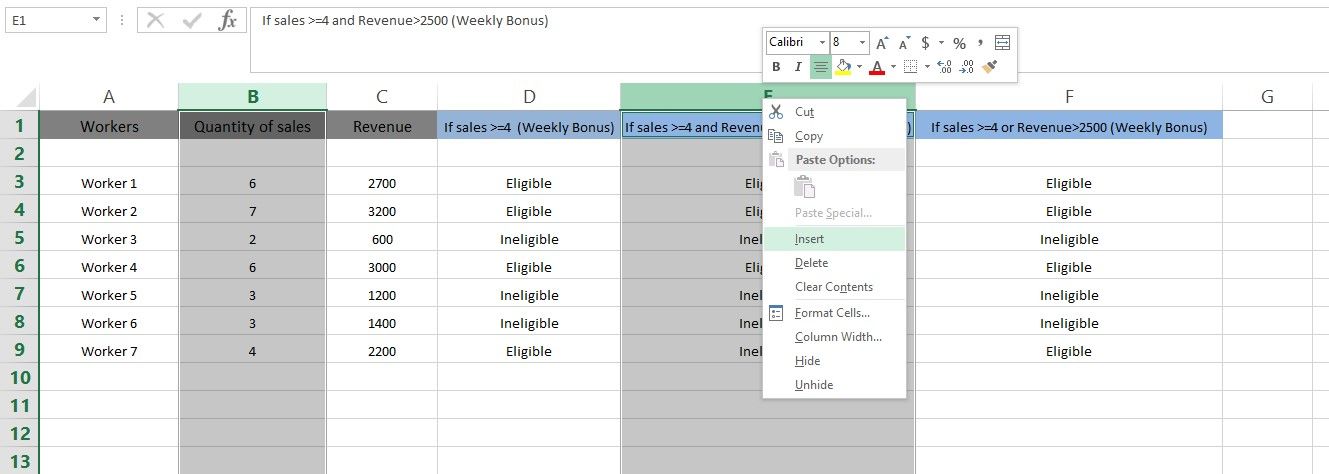
After that, you can apply any methods since the process will be nearly identical. Likewise, Excel allows you to compare columns if you want.
Limitations to Add a Column in Excel Table
Excel allows you to insert columns in a spreadsheet in a table format instead of in a regular dataset in range format, but there are some limitations you should be aware of.
The following are two major limitations you may face while adding a column to a data in table format:
1. You Can’t Add Columns With Non-Adjacent Columns in One Go
Unlike the typical range dataset, where you can easily add columns adjacent to non-adjacent ones by selecting multiple columns in the spreadsheet, you can’t do that in one go in a table. The only way you have here is to choose each non-adjacent column and insert a column left to it separately.
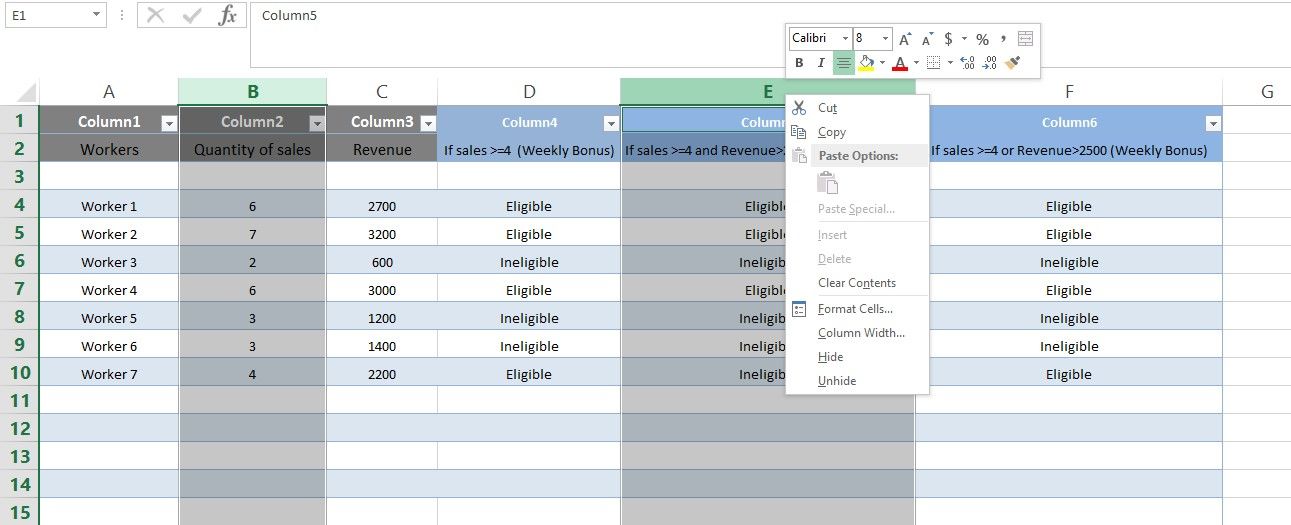
2. You Can’t Add Columns in a Sheet Completely Converted Into a Table
If you have converted the entire spreadsheet into a table rather than only the filled entries, you cannot add a column anywhere in the spreadsheet. It’s due to the table not having enough space to add a new column, which is not the case with a regular dataset.
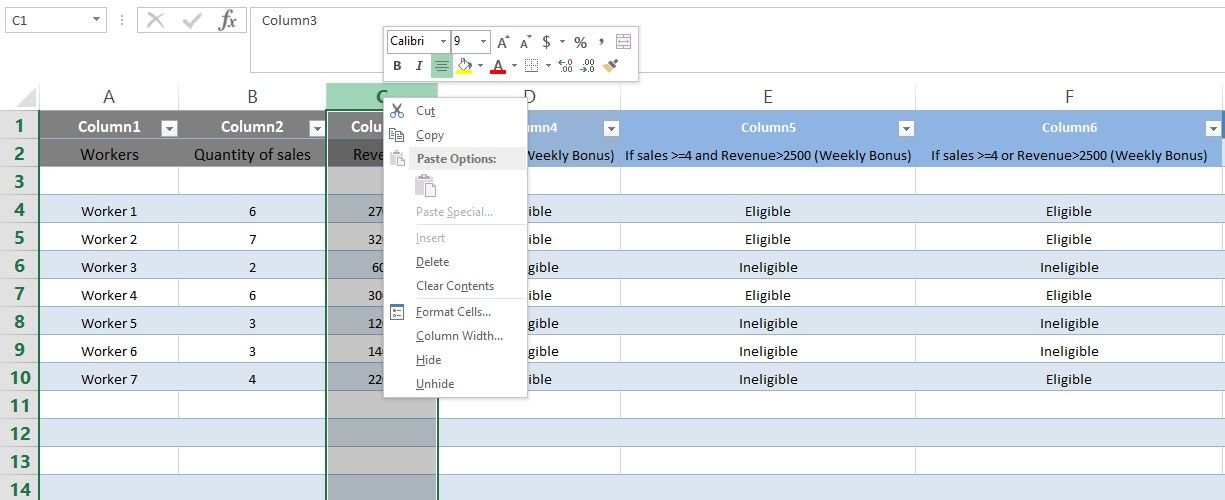
In both cases mentioned above, neither the shortcuts nor the Insert option will work to add a column. If you go to the Home tab and open the Insert dropdown menu, you’ll find that the option is grayed out there as well.
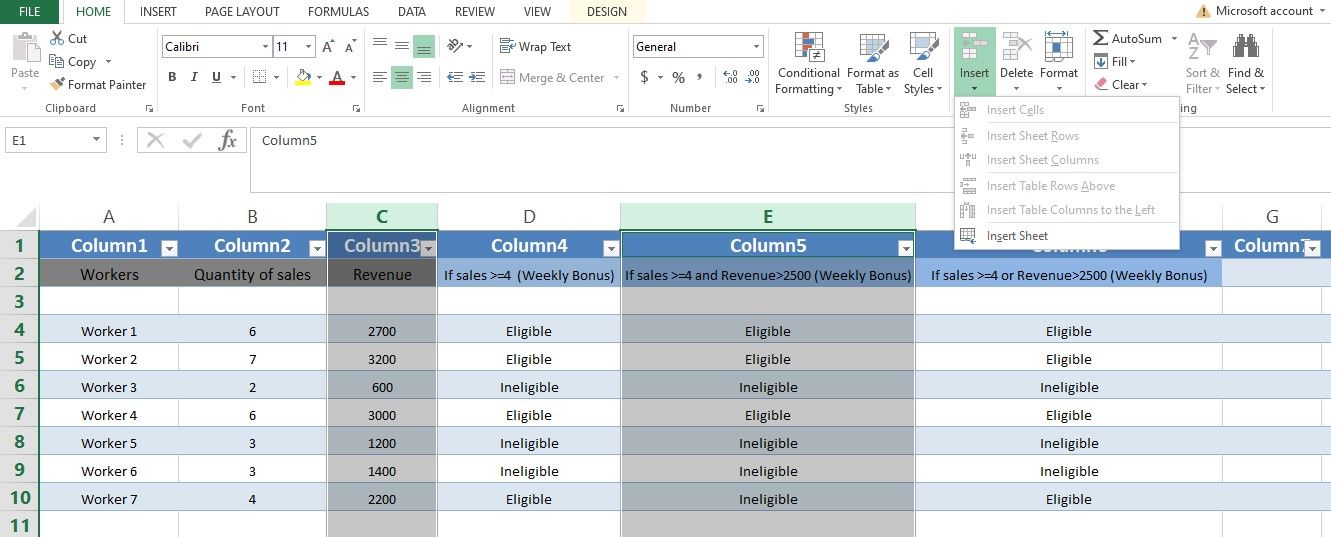
To overcome both limitations, it is best to convert the table into a range, add columns or make adjustments, then convert it back. However, before you do so, make a copy of your spreadsheet so that if Excel messes up the formatting during conversion, you can restore it.
You can convert an Excel table into the range format by right-clicking any cell in the table, navigating to Table, and clicking Convert to Range.
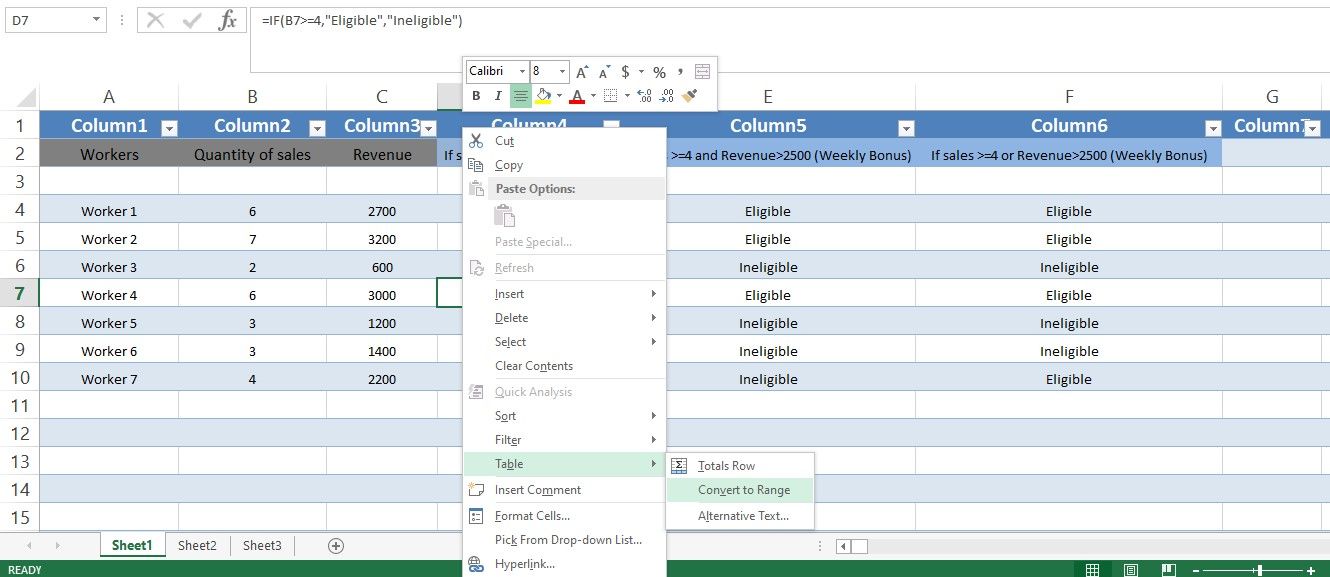
Add Columns in Excel Spreadsheet With Ease
You should now be familiar with adding single or multiple columns to an Excel spreadsheet. Feel free to experiment with them. Even though you’ll be limited in adding columns to tables, there are other ways to format them more effectively, so such limitations won’t make a significant difference.
See all How-To Articles
This tutorial demonstrates how to extend a table by adding a column in Excel.
When working with tables in Excel, you can resize them by using Resize Table in the Table Design tab or by simply inserting a column.
Add Column in Table Design
Say you have the data table shown below with columns for SKU, Product, Month, and Sales Amount.
If you want to add Price and Total Sales to the table, you’ll need to add two columns to the right.
- First, select the table by clicking on any cell in it. Then, in the Ribbon, go to the Table Design tab. In the Properties group, click Resize Table.
- In the pop-up screen, change the range for the table and click OK.
Since you want to add two more columns to the right, expand the range for Columns F and G, and the new range is B2:G16. As you can see, when you enter a new range, the dashed line shows the table size.
As a result, the table has two new columns (F and G) named Column1 and Column2.
- Finally, rename the columns. To rename Column1, enter Price in cell F2; and to rename Column2, enter Total Sales in G2.
Now you’ve resized the table and added the columns Price and Total Sales.
Insert Column
Another way to extend a table is to simply insert a new column.
- Right-click the Sales Amount column, then go to Insert, and click on Table Column to the Right.
As a result, a new column (named Column1) is inserted to the right of the selected column (Sales Amount).
- Then add one more column to the right in the same way.
- If you rename these two columns Price and Total Sales, you arrive at the same result as with Resize Table.


